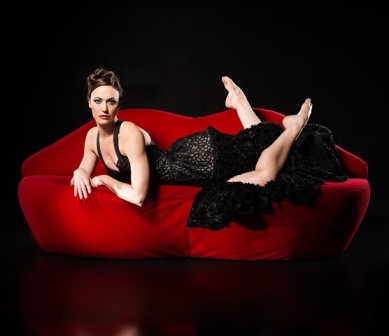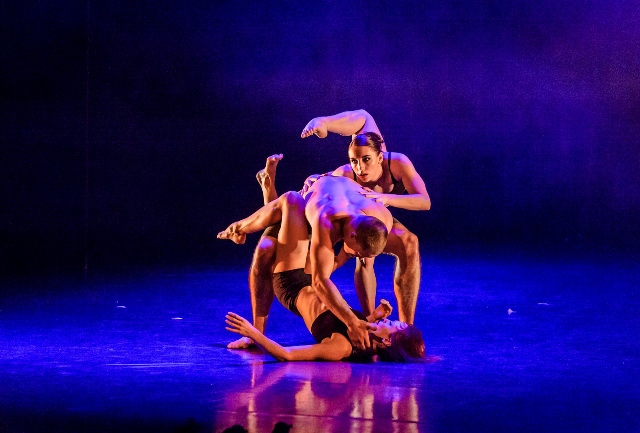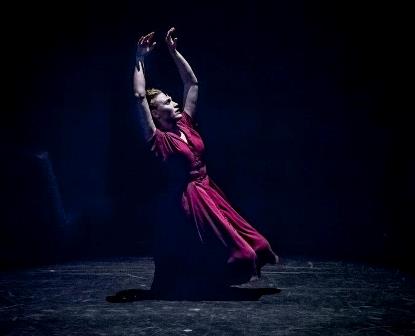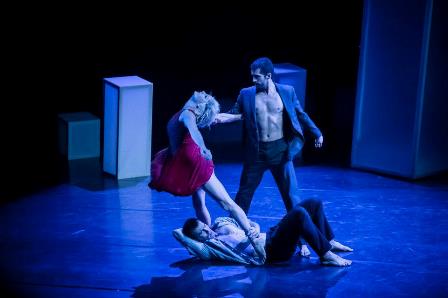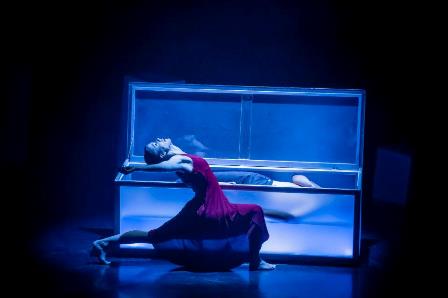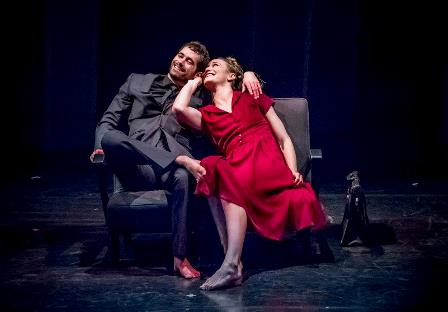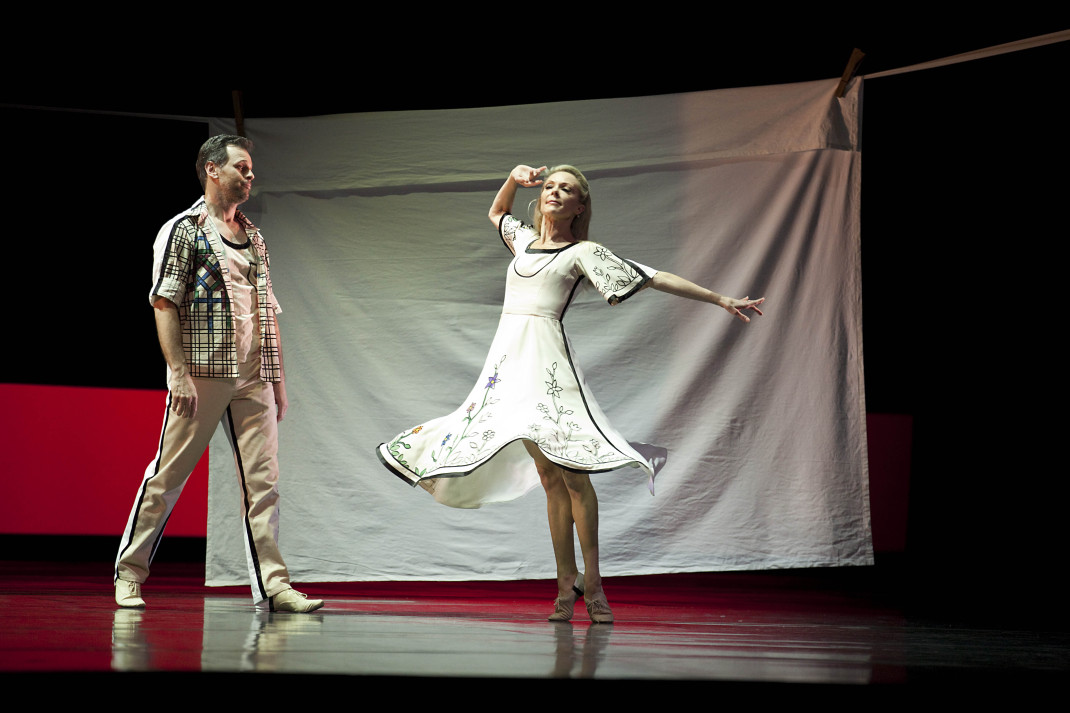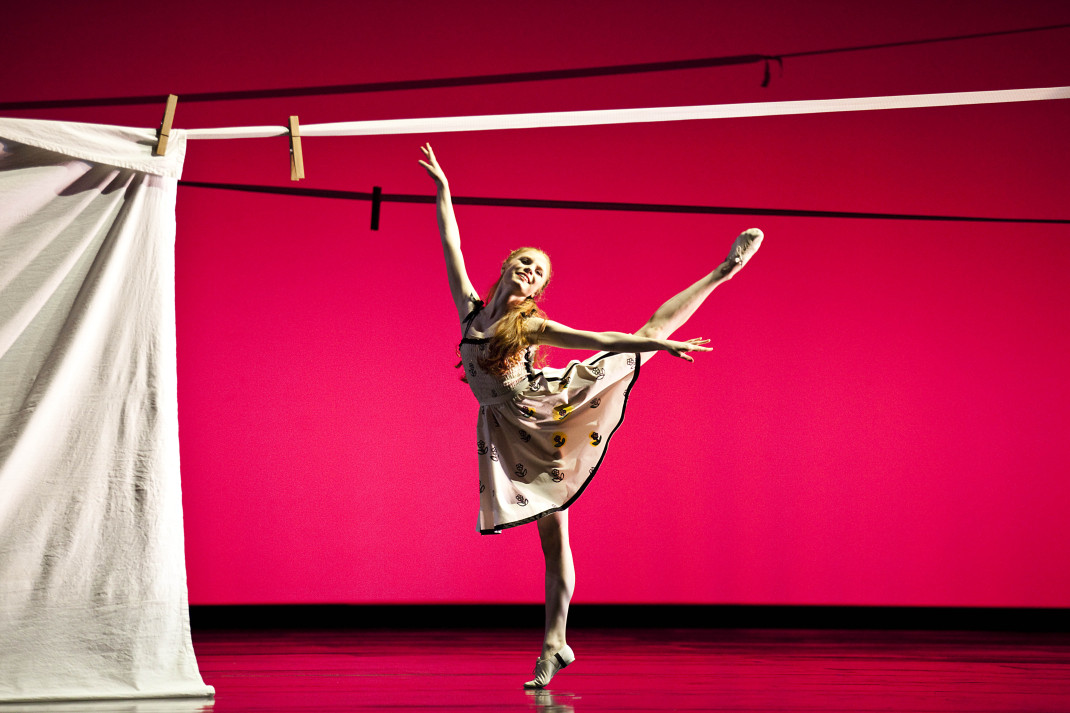9 October 2015, Queanbeyan Performing Arts Centre, Queanbeyan
This text is a slightly expanded version of my review, which appeared in The Canberra Times on 13 October 2015. A link to the online version of the review is at the end of this post.
Natalie Weir’s Carmen Sweet for Expressions Dance Company is simply sensational. Made for just six dancers with stunning, minimal design and powerful lighting, it demonstrates very clearly that less is more.
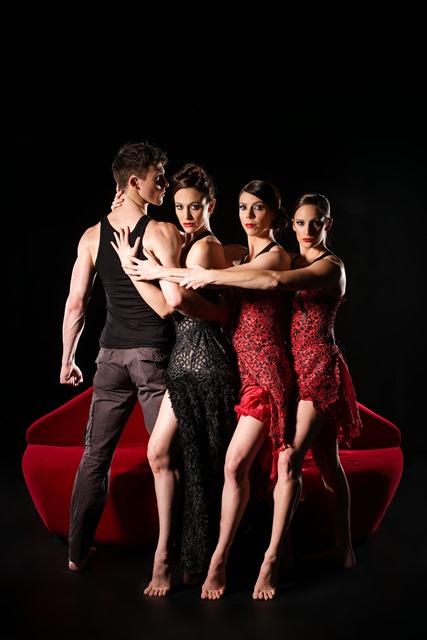
Carmen Sweet follows the familiar story of Carmen as we know it from the opera, at least in essence. Two men vie for Carmen’s love. She plays with the power she wields over them before one kills her. But in typical fashion, Weir has directed the story to accommodate her tiny company, and has taken a psychological look at the personality of Carmen. We encounter three Carmens, a young, flirtatious Carmen (Rebecca Hall), a sensual, fiery Carmen (Michelle Barnett) and a mature, knowing Carmen (Elise May). But that they are three shades of the one character is made clear in some exceptional choreography. Especially memorable is the scene where Carmen moves her affections from Don José, the soldier (Jack Ziesing), to that of Escamillo, the matador (Benjamin Chapman). Weir has choreographed this moment as a kind of ballroom dance for five people dancing as one. The three Carmens form the middle of the group with a man at each end. With changes of direction that are quite hypnotic, the leadership of the dance moves back and forth from Don José to Escamillo.
As the Fortune Teller who warns Carmen of her impending death at the hands of Don José, Daryl Brandwood gave a powerful performance. His expressive body curved and curled as he stalked around the older Carmen. He took her head in his hands and turned her gaze towards her younger counterpart, forcing her to watch as the impending murder was played out. And the final moment in this scene was set up on the diagonal for maximum theatrical impact. Our eyes were drawn back and forth from the demands of the Fortune Teller upstage, to prefigured death downstage as Ziesing hovered over the body of Carmen.
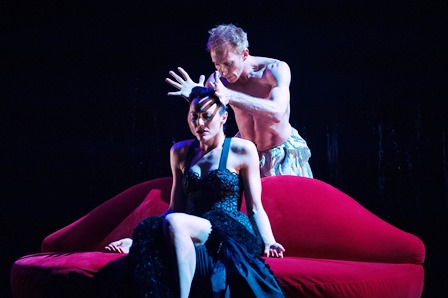
The final scene is also choreographed on the diagonal and gives us another look at the three Carmens as one. Shrouded in moody lighting (Ben Hughes and Amelia Davis), one by one the three women fall smoothly onto the sofa, which has been moved downstage, each one not quite covering the other. Upstage the murderer, Don José, is a tense and lonely figure, his empty hands stretched forward. It is a startling image that again invites us to cast our eyes from one grouping to the other.
Weir has skilfully used the Rodion Shchedrin score, which is an arrangement for strings and percussion of extracts from music by Georges Bizet. She has, of course, used well-known melodies to identify the various characters. Escamillo, for example, enters to the familiar music that accompanies the Toreador Song in Bizet’s opera. But Weir’s skill is also noticeable in the way her choreography matches Shchedrin’s percussive sounds, exemplified especially in the last solo by the sensual Carmen where her pizzicato-style movements match beautifully with the notes.
Bill Haycock’s minimal but dramatic use of colour added extra strength to what was an exceptional piece of theatre. A single, red Salvador Dali ‘lip’ sofa was all that we needed to set the scene of passion and revenge, and the dancers used it to accommodate their outbursts of fiery behaviour. Haycock’s costumes for the three Carmens continued the theatricality. The older Carmen flounced seductively in a long-ish black, flamenco-styled dress, while the younger Carmens wore shorter, sexy red numbers.
And a big bouquet to the six local dancers, each carrying a single red rose, who accompanied Escamillo’s entrance. They performed with all the aplomb of the professionals with whom they shared the stage.
Carmen Sweet is a five star show.
Here is the link to the review as it appeared in The Canberra Times.
Michelle Potter, 13 October 2015
Featured image: Elise May in Natalie Weir’s Carmen Sweet. Expressions Dance Company. Photo: © Dylan Evans
